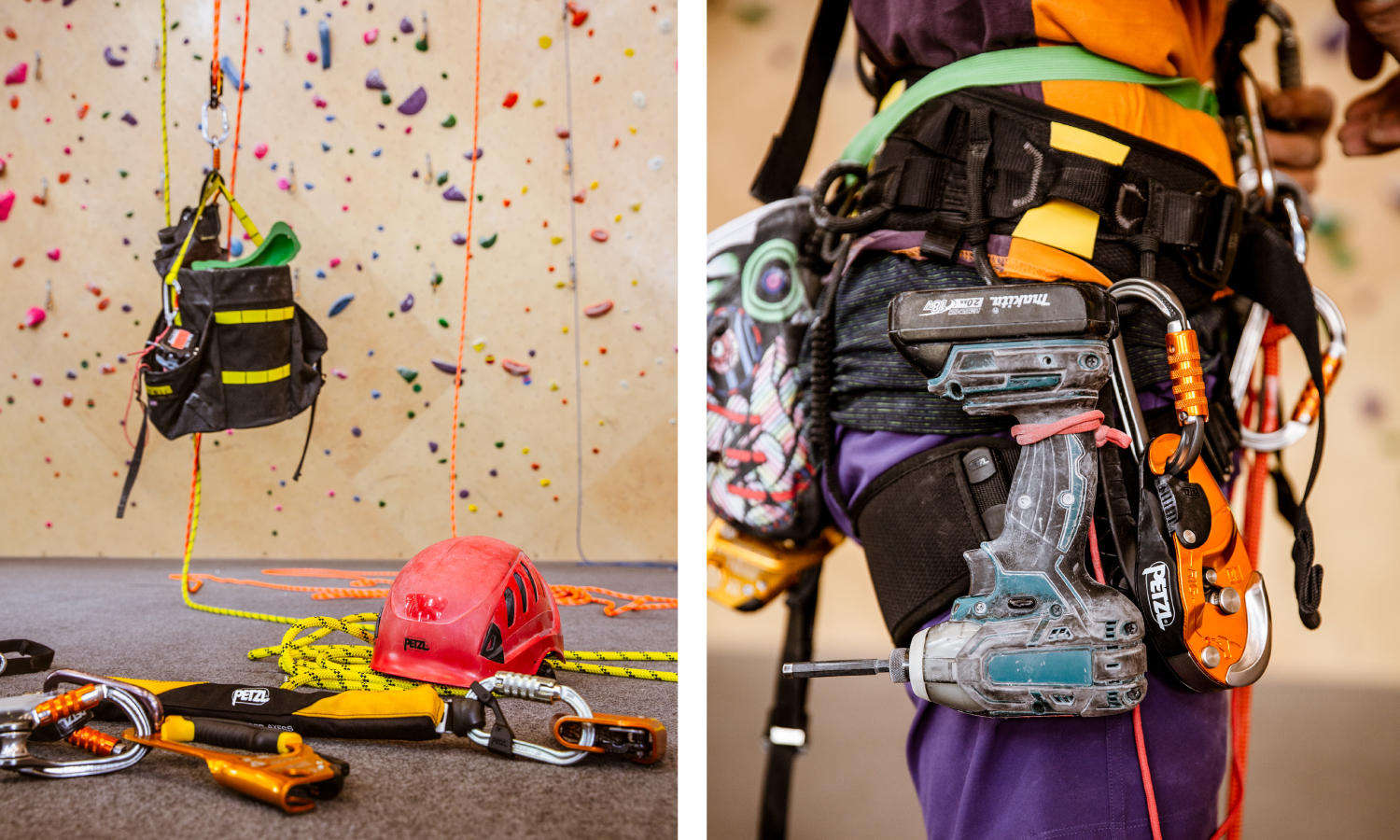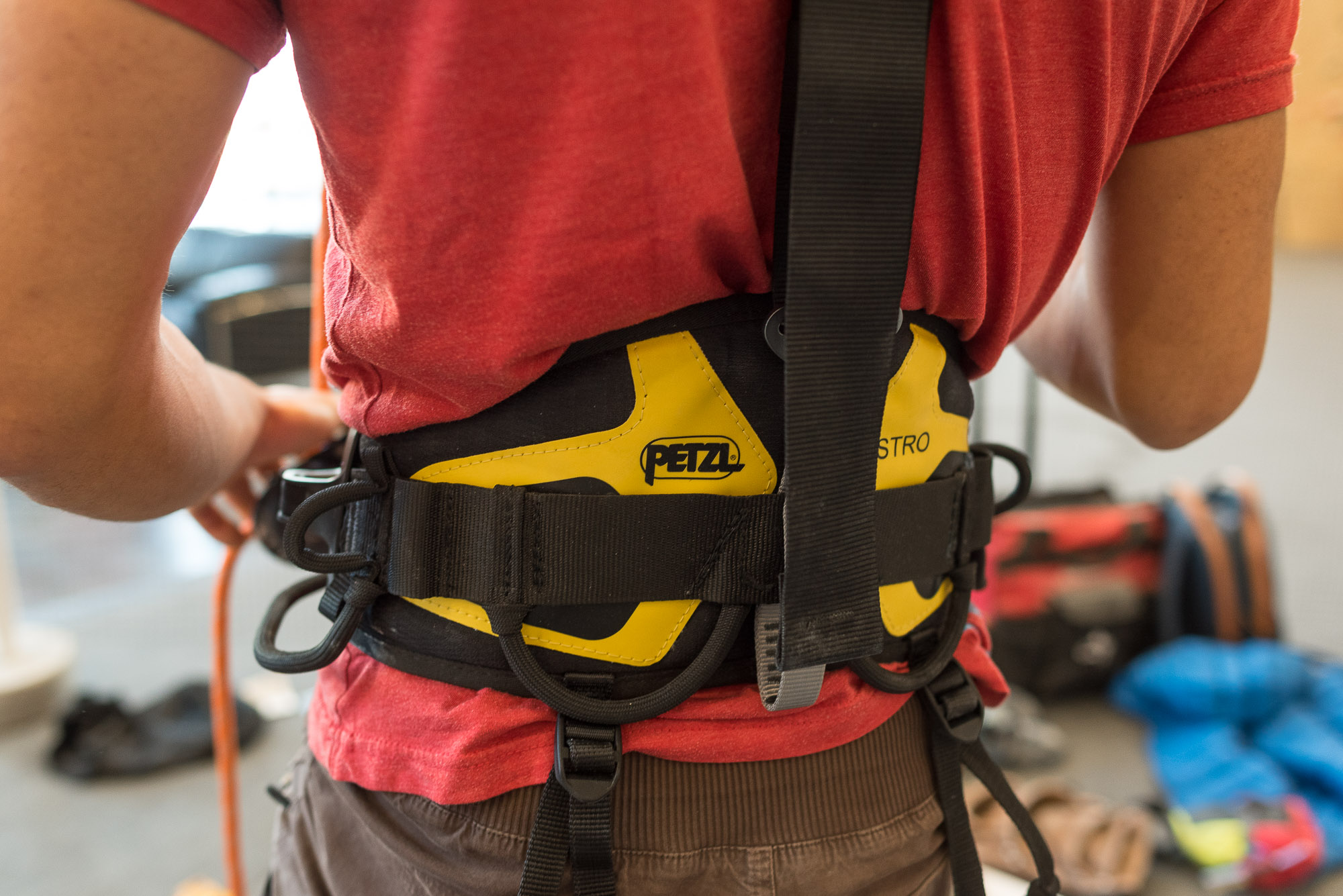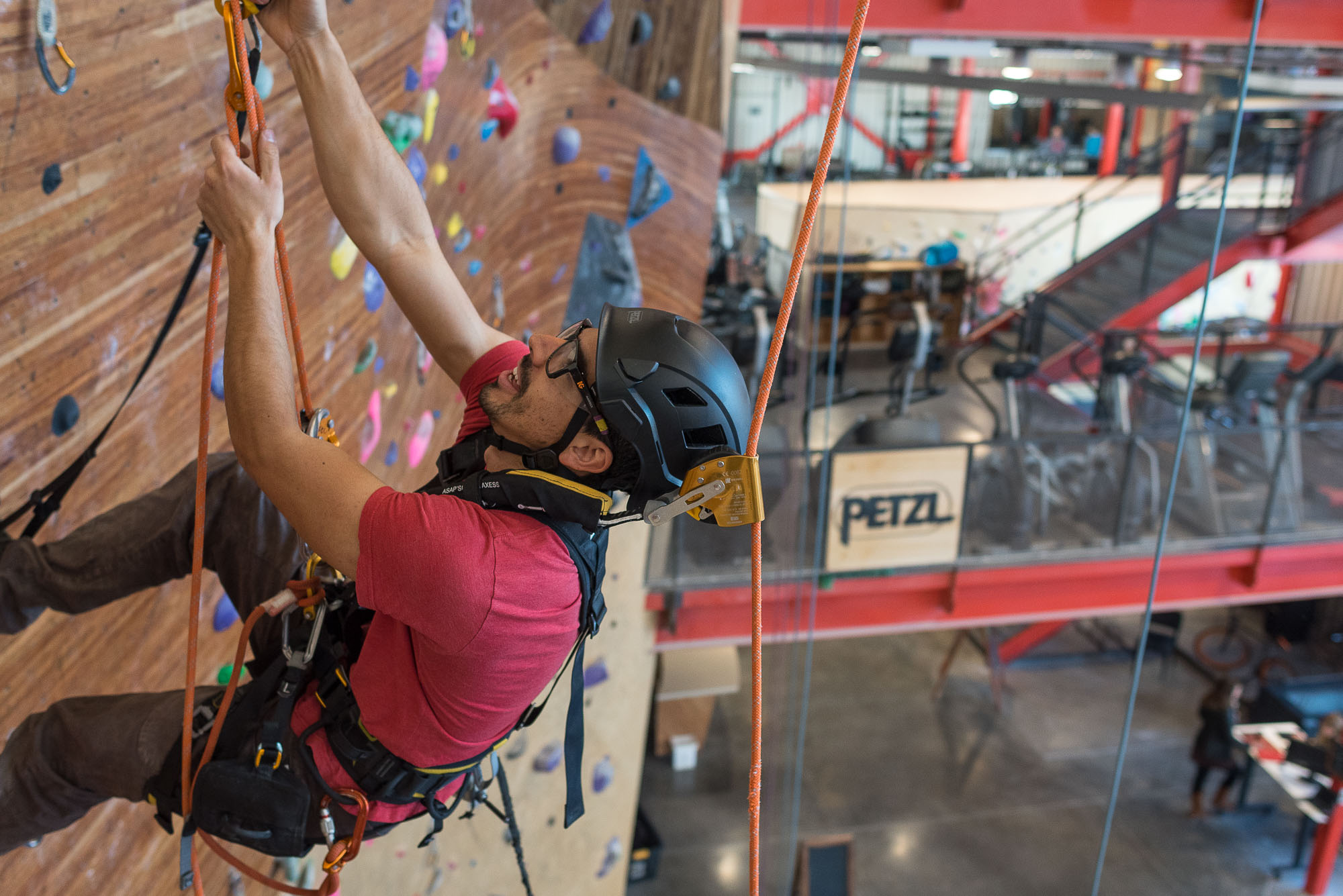
The information provided in this post is a brief introduction to complex work-at-height techniques, equipment, and training. It is important to read and fully understand the technical notices associated with each product and consult a qualified professional before attempting to use this equipment or perform these techniques on your own.
This past summer, Petzl America went on a North American routesetting tour to demonstrate our best practices and techniques with routesetters for working at height. What we encountered was surprising: A community hungry for ways to mitigate fall risk, increase comfort when suspended for long periods and build better systems for hauling and positioning wall equipment. The boom in climbing as a sport --- and the accompanying boom in the establishment of new climbing gyms --- has been met with routesetters and gym operators who are increasingly serious about the rope access work they perform. This is great news, because the truth is that routesetting is a high-consequence work-at-height activity that demands to be taken seriously.
The first step in risk mitigation is joining the greater community of routesetters by adopting the proper mindset. Ask yourself the following questions:
Your routesetters are likely already familiar with rock climbing gear and techniques, but professional work-at-height gear and techniques are different in a number of ways. Providing your team with this foundational knowledge through appropriate equipment and training will serve them well as they turn their passion into a profession.
Managing a team of routesetters means prioritizing the safety, comfort, and efficiency of your employees. A common routesetter kit, for example, often includes little more than a climbing harness like the SAMA, a GRIGRI, a single rope, a personal anchor sling, and an ASCENSION ascender. These are all items that a casual rock climber may already have. But working at height presents different challenges than working a climbing route. The addition of a PODIUM seat and chest harness dramatically increases routesetter comfort and stability; a backup rope with an ASAP fall arrestor and an ASAP’SORBER energy absorber further mitigates fall risk; a PROGRESS ADJUST makes it easier to maintain proper positioning; and a RIG descender is a more efficient alternative to the GRIGRI belay device that includes safety features more appropriate for working at height.
Similarly, the routesetter transferring her climbing skills to a hauling system might use an ASCENSION ascender, a MICRO TRAXION progress capture pulley, and a redirecting carabiner. But the simple addition of a ROLLCLIP pulley-integrated carabiner and a PRO TRAXION progress capture pulley results in a dramatic increase in efficiency, requiring less work on the part of the setter while she hauls heavy bags and tools up the wall. These same principles apply to heavier-duty work like hauling and positioning large volumes.

After you’ve adopted the right mindset and secured the proper equipment, the next step is routesetter work-at-height training. Petzl America’s North American flagship facility in Salt Lake City features a 15,000-square-foot, state-of-the-art technical training center called the Petzl Technical Institute (PTI). The PTI offers training for a work-at-height certification developed and issued by the Climbing Wall Association. The site features a 55-foot-tall climbing wall with multipitch capability, more than 5,000-square-feet of exposed structure climbing and more. It’s a great place for one-stop training for your routesetters and any other work-at-height employees.
A mindset shift is free; training and proper gear have up-front costs. Increasing the safety of your routesetters is an obvious benefit of these investments, but a more robust set of routesetting protocols also brings actual budget savings. Properly mitigating work-at-height risk means reducing the incidence of worker’s compensation claims. More comfortable routesetters who are provided with industry work-at-height training means a drop in employee turnover. More efficient systems result in more efficient use of paid routesetting time, lowering the labor cost you incur. Plus, efficiency in hauling, positioning and lowering helps reduce routesetter overuse injuries, which means they can spend more time climbing instead of recuperating!

The climbing gym industry is rapidly growing, which means the number of routesetting professionals is, too. Gym operators can better their employee longevity and job satisfaction by endorsing continued professional development, providing the best equipment and work-at-height training as well as establishing a culture of safety and responsibility. To help, Petzl America offers a one-stop solution for almost all of your climbing gym needs.
Ask your contact at Vertical Solutions for an introduction.